Become a JRE-Inside+ member and enjoy exclusive benefits, inspiring interviews, recipes & articles, event infos and more.
- Always up to date with our world of fine dining
- Receive invites to exclusive events
- Get to know our Chefs through interviews and recipes
This article is for JRE-Inside+ members only
Go JRE-Inside+Parmigiano Reggiano the values of a product deeply rooted in its land
Parmigiano Reggiano is one of the oldest and richest cheeses in the world. This cheese is essentially produced like nine centuries ago: using the same ingredients (milk, salt and rennet), with the same craftsmanship and production technique that has undergone very few changes over the centuries, thanks to the decision to keep a fully natural production, without the use of additives. Its production is governed by strict Specifications, registered with the European Union, because Parmigiano Reggiano is a cheese with Protected Designation of Origin (PDO), i.e. a product that, based on its distinctive characteristics and its tie to the area of origin, is safeguarded by a system provided by the EU to protect consumers and producers alike. To bear the designation “Parmigiano Reggiano PDO”, the cheese has to be made respecting strict rules. First of all, it has to be produced in the Area of origin (which includes the provinces of Parma, Reggio Emilia, Modena, Mantua to the right of the Po river, and Bologna to the left of the Reno River - a surface of approximately 10,000 km2). The production of cow's milk, the processing into cheese, the maturation until a minimum age of 12 months, the packaging and the grating of Parmigiano Reggiano PDO has to take place exclusively in the area of origin. Therefore, it is not possible to make Parmigiano Reggiano cheese with milk produced outside this area or coming from abroad. Furthermore, Parmigiano Reggiano has to be made using artisan and natural methods that are established in the Product Regulation and in the strict Specifications, which set forth specific production procedures (Production Standard), a special diet for cows (Feeding Regulation for Dairy Cattle), rules for using the hot-iron mark (Marking Regulation).
The unbreakable bond with its area of origin.
What strongly binds Parmigiano Reggiano to its area of origin and makes it so that in no other place in the world can the same product be manufactured, even if the same production techniques were used, are the aspects associated to culture and tradition. It is first and foremost a microbiological characteristic that binds Parmigiano Reggiano to its area of origin. Only raw milk produced in the area of origin is indeed used to produce Parmigiano Reggiano cheese. It is a special milk, characterised by a unique and intense bacterial activity of the local microbial flora, influenced by environmental factors, especially by the forage, grass and hay from the area that account for the main feed of the cows dedicated to this specific production. Furthermore, no additives are used to make Parmigiano Reggiano. This means that during the production process there are no external actions (for example no addition of enzymatic additives or bacteria selected in laboratory) to change the activity of the bacteria that are naturally found in the raw milk produced by the farms in the area of origin. Only the cheese master during processing, thanks to the cheese making technique, can enhance and favour the lactic bacteria that operate the positive lactic fermentations that are expected for the success of the cheese making process.
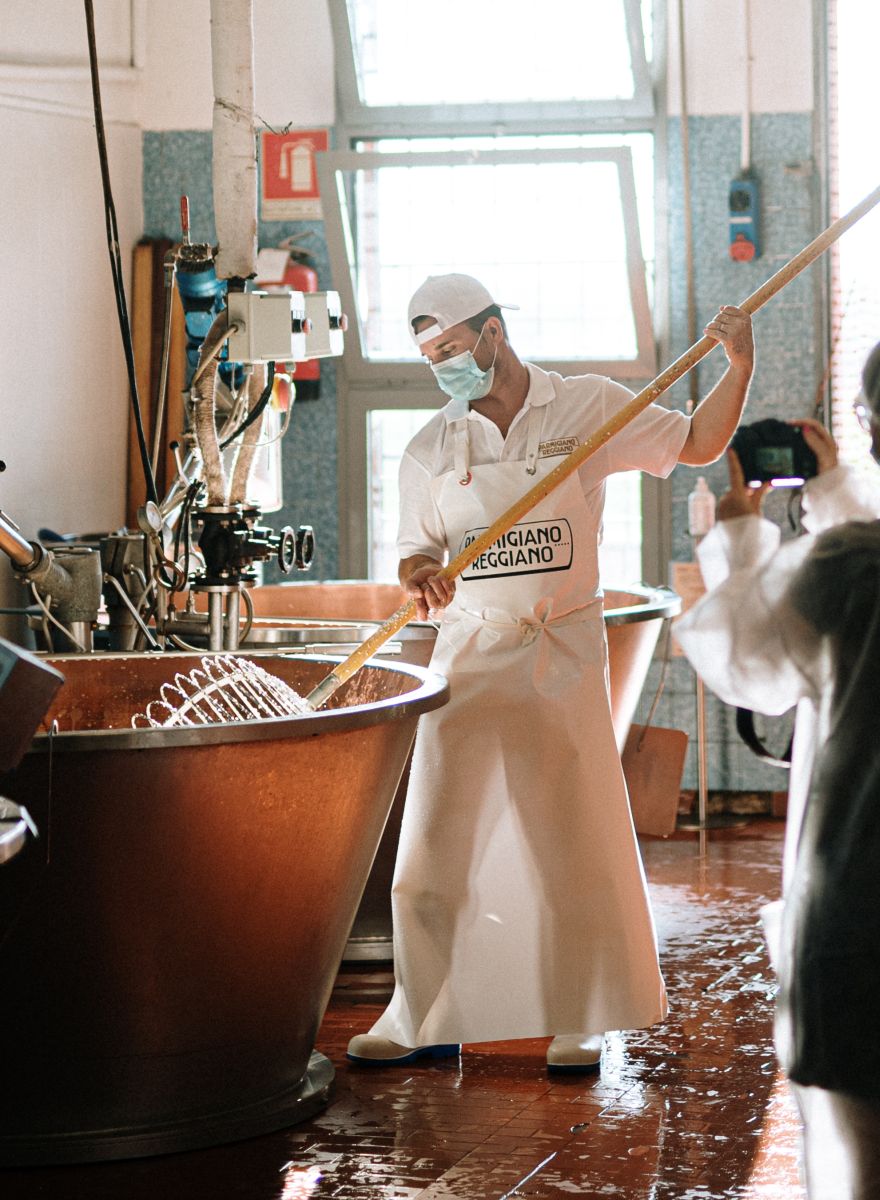
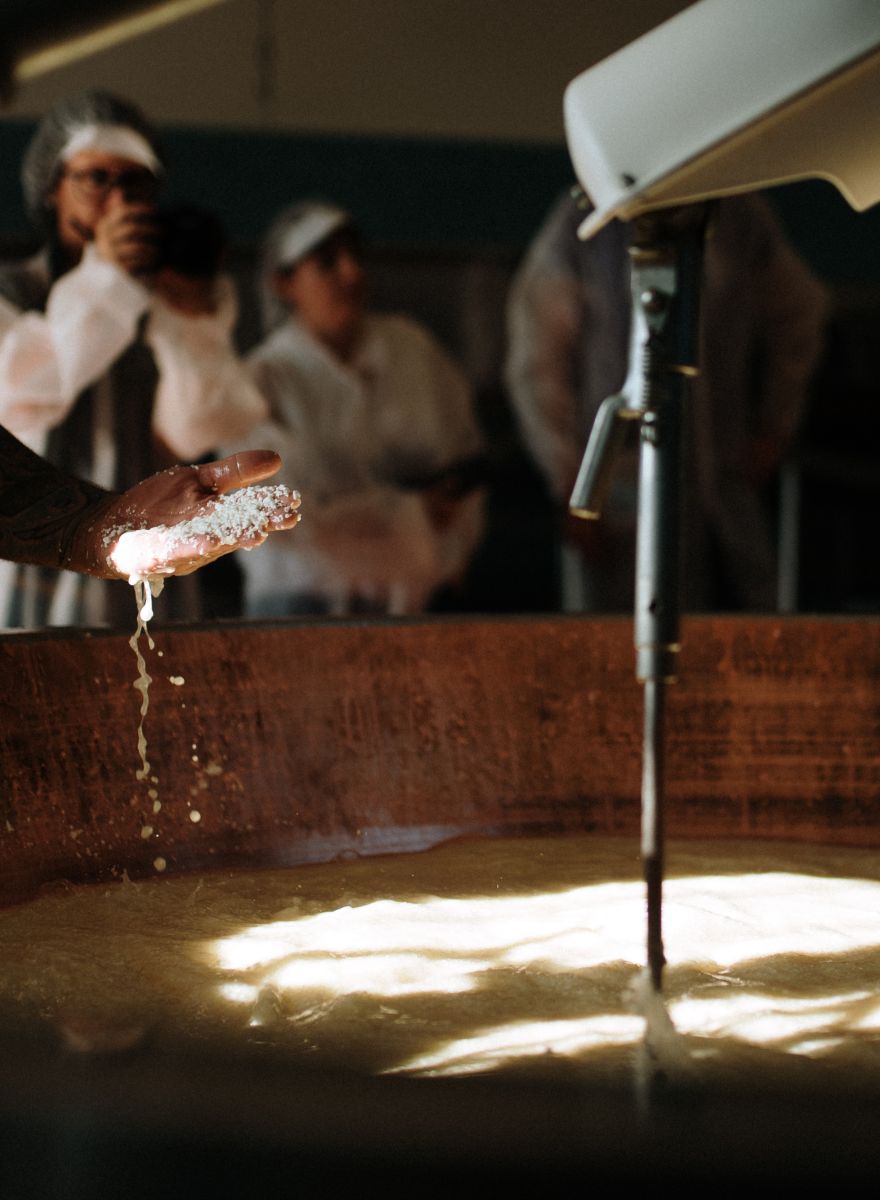
The birth of a myth.
Parmigiano Reggiano has always been an expression of its land of origin and of Italy worldwide until its very origins, which are old and noble and date back to the Middle Ages. In particular, monks were the first producers of Parmigiano Reggiano, driven by the quest for a cheese featuring one main characteristic: that of lasting for a long time. They achieved this result by letting the cheese mass dry and increasing the wheel size, thus enabling the cheese to keep long and thus to travel, including far away from the production area. This feature has been Parmigiano Reggiano's fortune, resulting in it travelling around the world for centuries to become an authentic expression of what we call today the Made in Italy agribusiness. The first written evidence dates back to 1254 in a notarial deed found in the State Archives of Genoa where a the caseus parmensis, i.e. the cheese from Parma, is mentioned. The best known literary evidence dates back to 1344: Giovanni Boccaccio in the Decameron described the district of Bengodi and mentioned a mountain of "grated Parmesan" on which "Macaroni and ravioli" were rolled, which is a clear indication of the product's use in the kitchen.
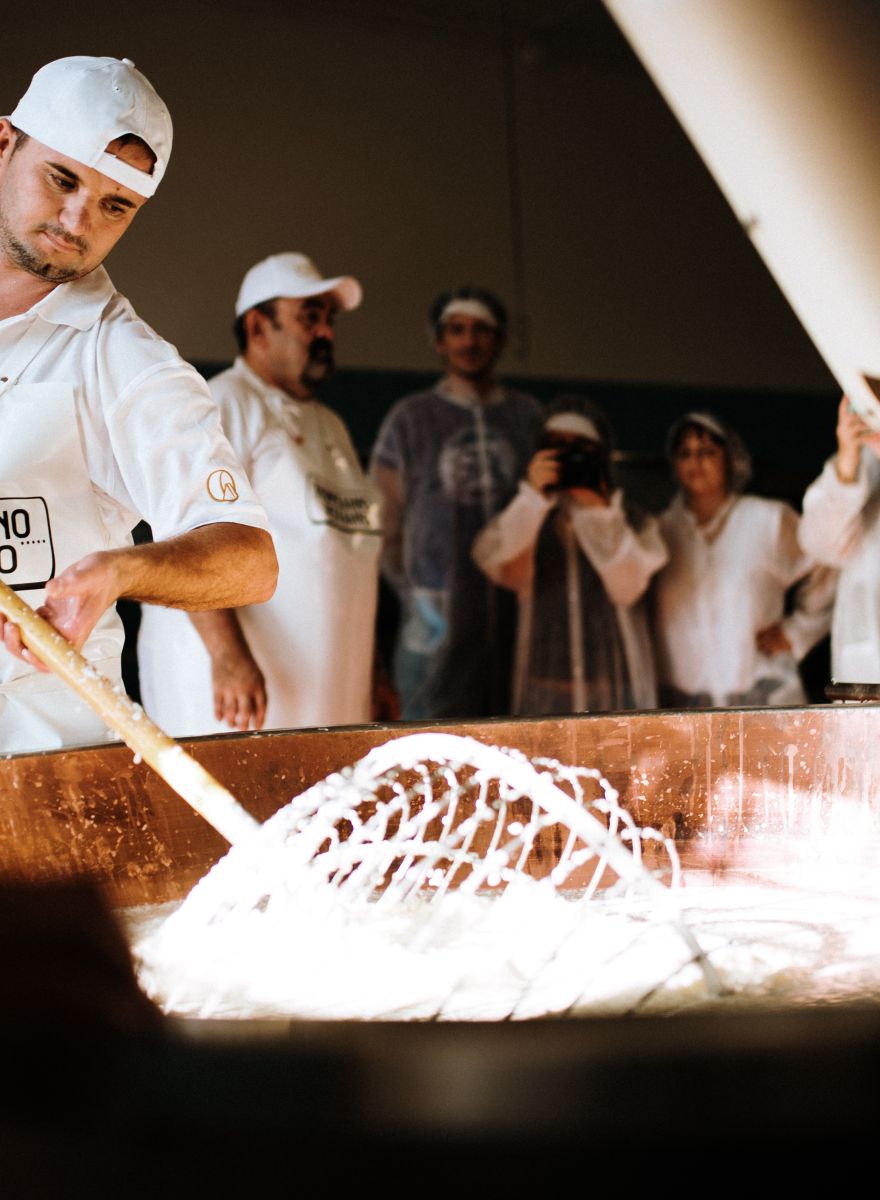

Good for taste and health.
Its numerous properties are all linked to the intrinsic product quality: digestibility, high calcium content present in a bioavailable form, absence of additives and preservatives, source of minerals, organoleptic pleasantness and liking. Due to these characteristics, Parmigiano Reggiano is a fundamental food in the daily diet of everyone, from children to elderly people, including athletes who find in Parmigiano Reggiano a fully natural energy charge. Thanks to its production process, the King of Cheeses is also naturally lactose free already 48 hours from production since all its sugar (lactose) is transformed into lactic acid by lactic bacteria.
The feeding of cattle.
The cattle producing milk intended for the production of Parmigiano Reggiano follows a specific diet. The Specifications indeed set out that forage should be mostly procured locally. In particular, the Specifications establish that at least 50% of the forage used by the cattle should be grown by the dairy farm, and at least 75% should be grown within the production area. As a matter of fact, the production fabric is almost totally made up of family run farms that are deeply rooted in the area, so almost all the forage comes from the farm and the production area. The Specifications also provide that the cattle diet be based exclusively on vegetable feeds containing cereals such as barley, wheat, corn (from feed manufacturers that are registered with the Feed Manufacturer List set up by the Parmigiano Reggiano Cheese Consortium). The Feeding Regulation establishes strict requirements for the raw materials that can make up the cows’ feed: some raw materials that are very common in standard feeds are forbidden for our cows to prevent the milk from developing off aromas or flavours or losing its typical characteristics.
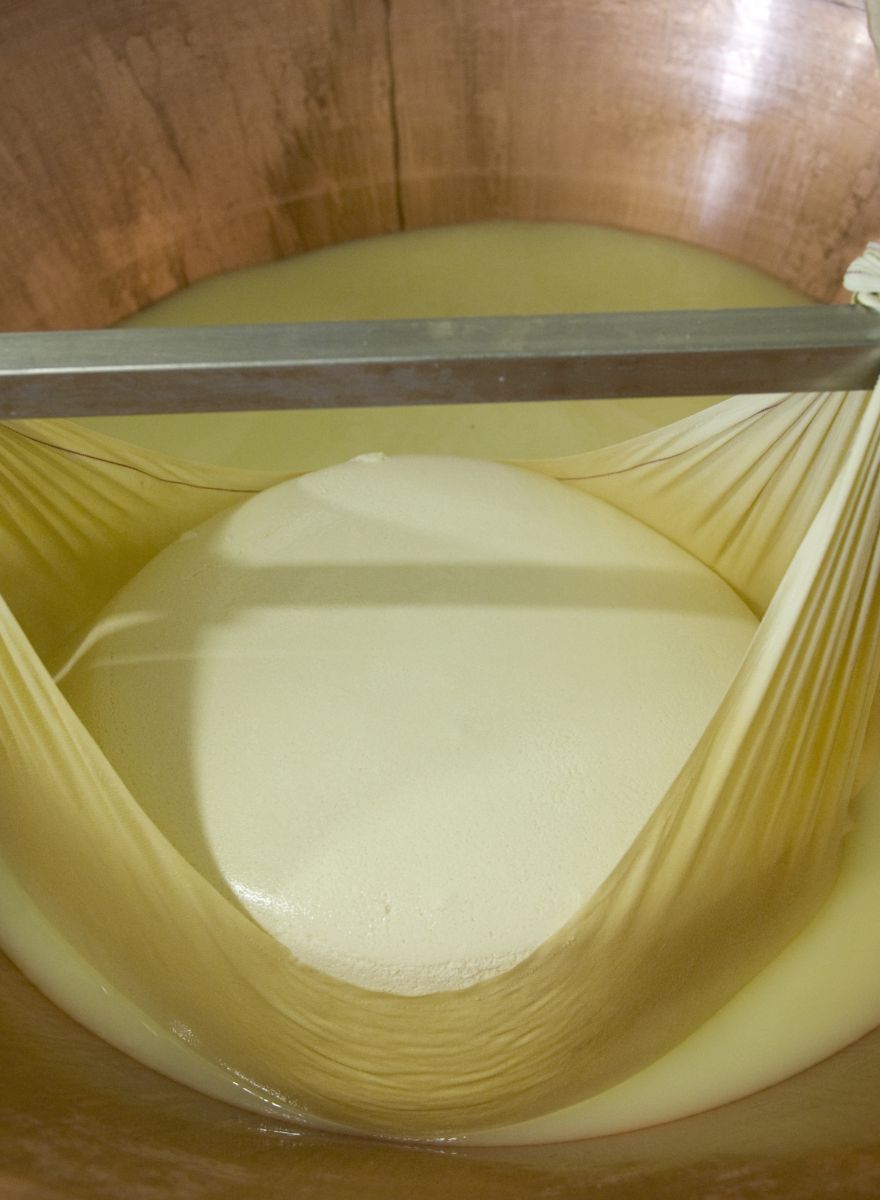
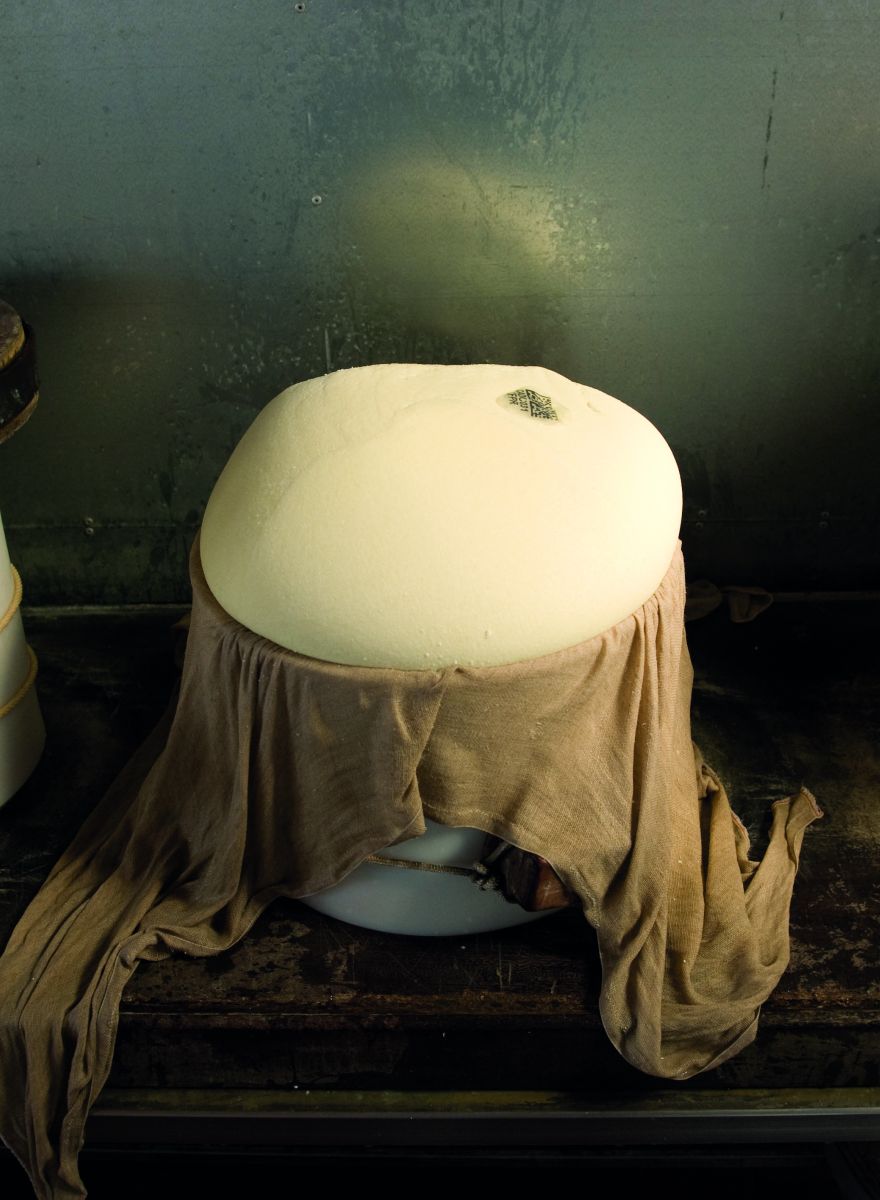
All additives banned.
Furthermore, Specifications establish that the use of fermented feed is absolutely forbidden to feed cattle. Therefore, the use of silage feed is forbidden, whilst this is largely used in other parts of Italy. Indeed, this fermented feed leads to the presence of bacteria in milk (clostridia spores that are resistant to heat) that cause harmful fermentations that give rise to defects in the cheese during its lengthy maturation (swelling of the cheese mass caused by undesired development of gas). The only way to prevent these harmful microbial activities is using additives or physical milk centrifugation techniques. But producers have always opposed to the adoption of non-natural practices and thus the use of any additives in the production of Parmigiano Reggiano is absolutely forbidden. These strict regulations for the feeding of cattle are particularly important because it is what cattle eats that leads to a good quality milk that is suitable to make Parmigiano Reggiano. Furthermore, it is forage that determines the positive “bacterial flora” that establishes the link with the land and characterises the milk first and the cheese later. Parmigiano Reggiano is a PDO, i.e. Protected Designation of Origin, product where the word “origin” refers to the area where it is made, which “influences” the product because of this very bacterial activity that is left totally free in Parmigiano Reggiano since there are no additives that can change fermentations and enzymatic activities during its maturation process.
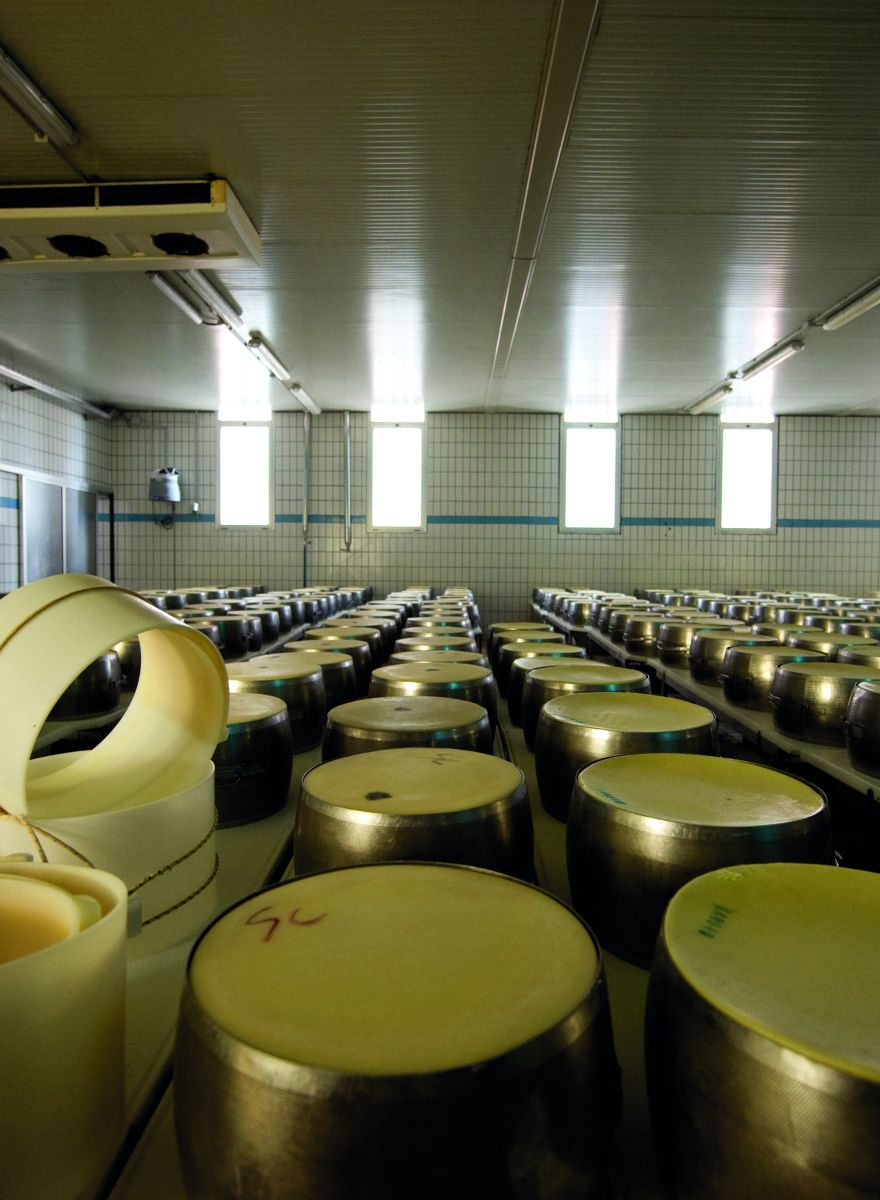
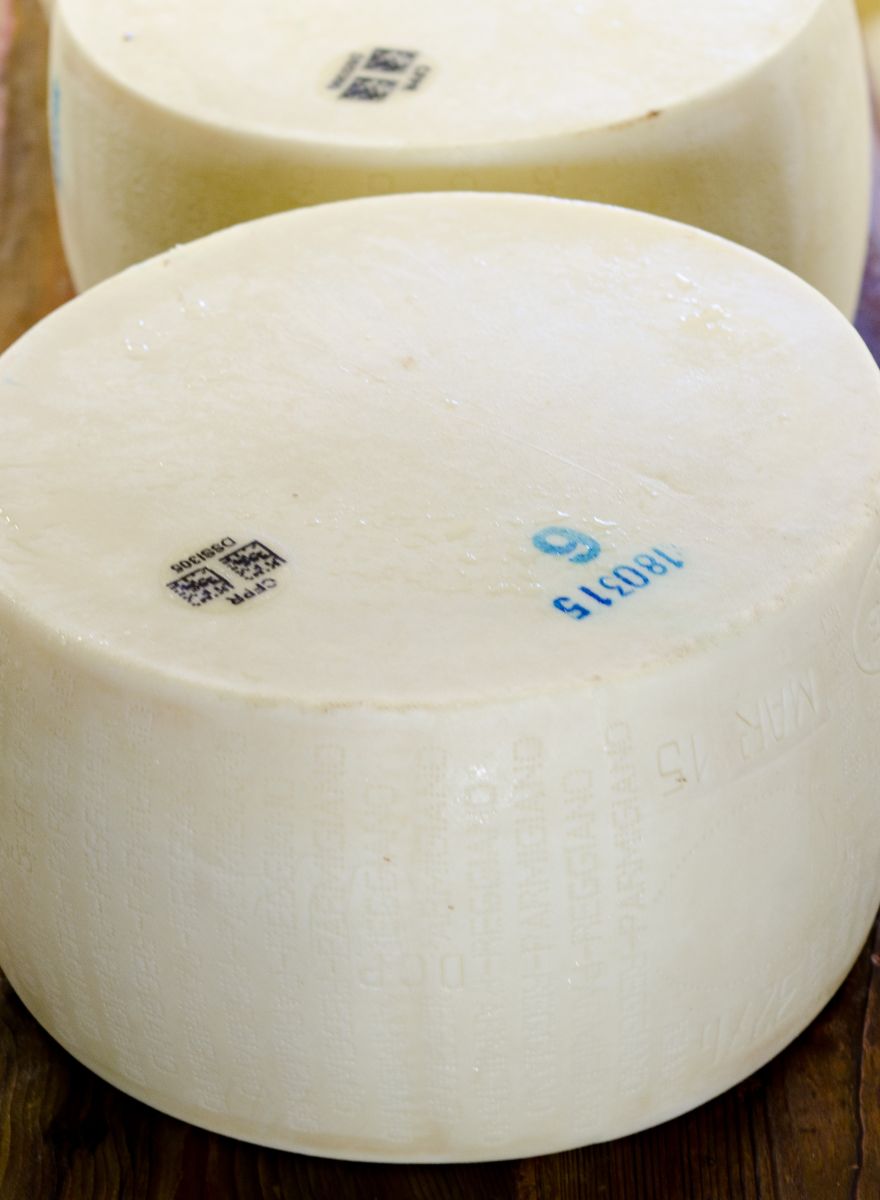
Only raw milk, salt and rennet.
Only three ingredients are used to produce Parmigiano Reggiano: milk, salt and rennet. Milk is used raw, i.e. it does not undergo heat treatments, therefore it features all the richness of lactic ferments naturally present in it. The microbial flora composition is influenced by the environmental factors of the area of origin, especially by hay and the specific feeding of cattle. For the production of Parmigiano Reggiano cheese, only calf rennet is used; rennet is obtained from the stomach of suckling calves (bacterial rennet is forbidden) and kitchen salt (sodium chloride). The use of any additives and selected bacterial starters is forbidden.
Maturation.
Minimum maturation is 12 months, but Parmigiano Reggiano reaches a degree of maturation that fully expresses its typical characteristics at approximately 24 months. It can mature up to 36, 48 months or longer, acquiring unexpected and unparalleled flavours and aromas. In maturation, thanks to the action of the enzymes released by lactic bacteria, proteins are broken down into smaller pieces, free peptides and amino acids, the basic bricks of the protein chain. This action of protein breakdown (proteolysis) determines the structure and sensory properties of Parmigiano Reggiano and its digestibility. The different degrees of maturation give rise to varying aromatic sensations and make it particularly versatile in the kitchen and suitable for several preparations and pairings:
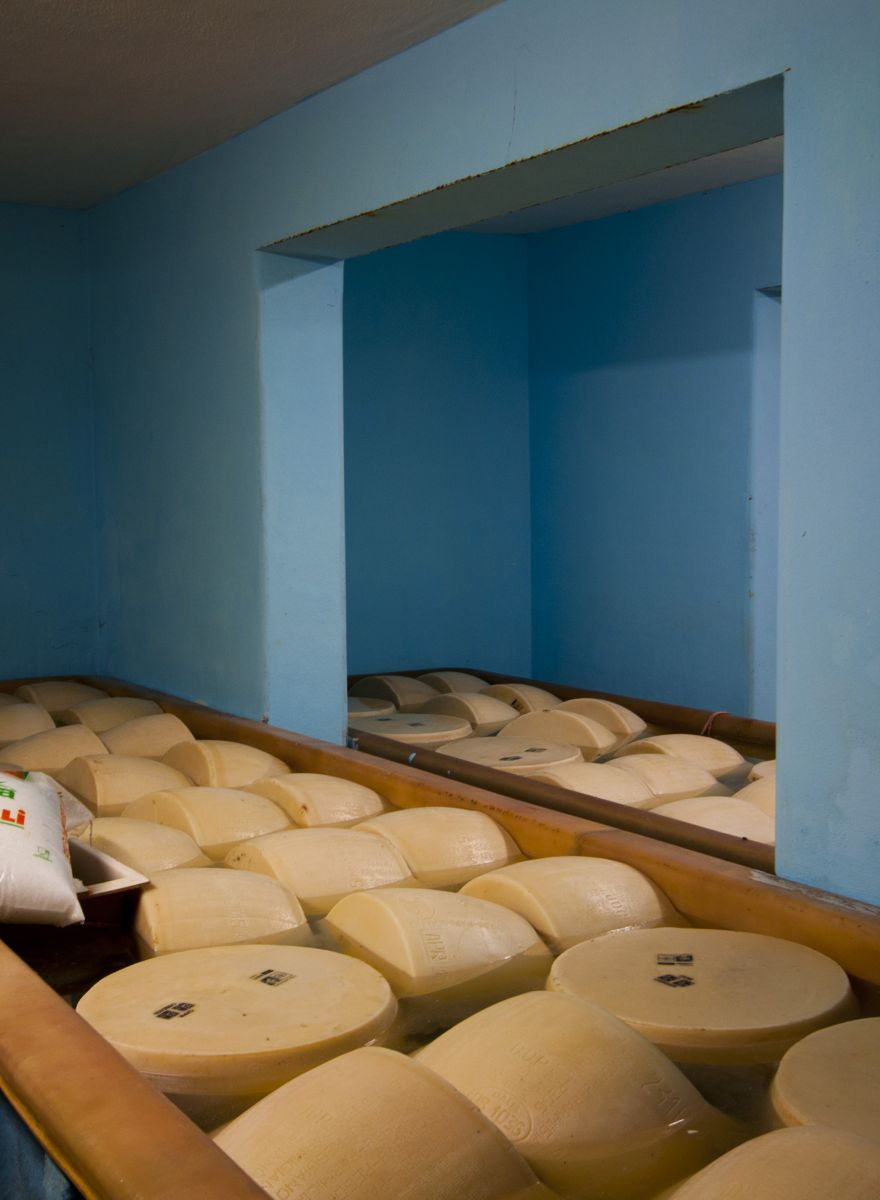
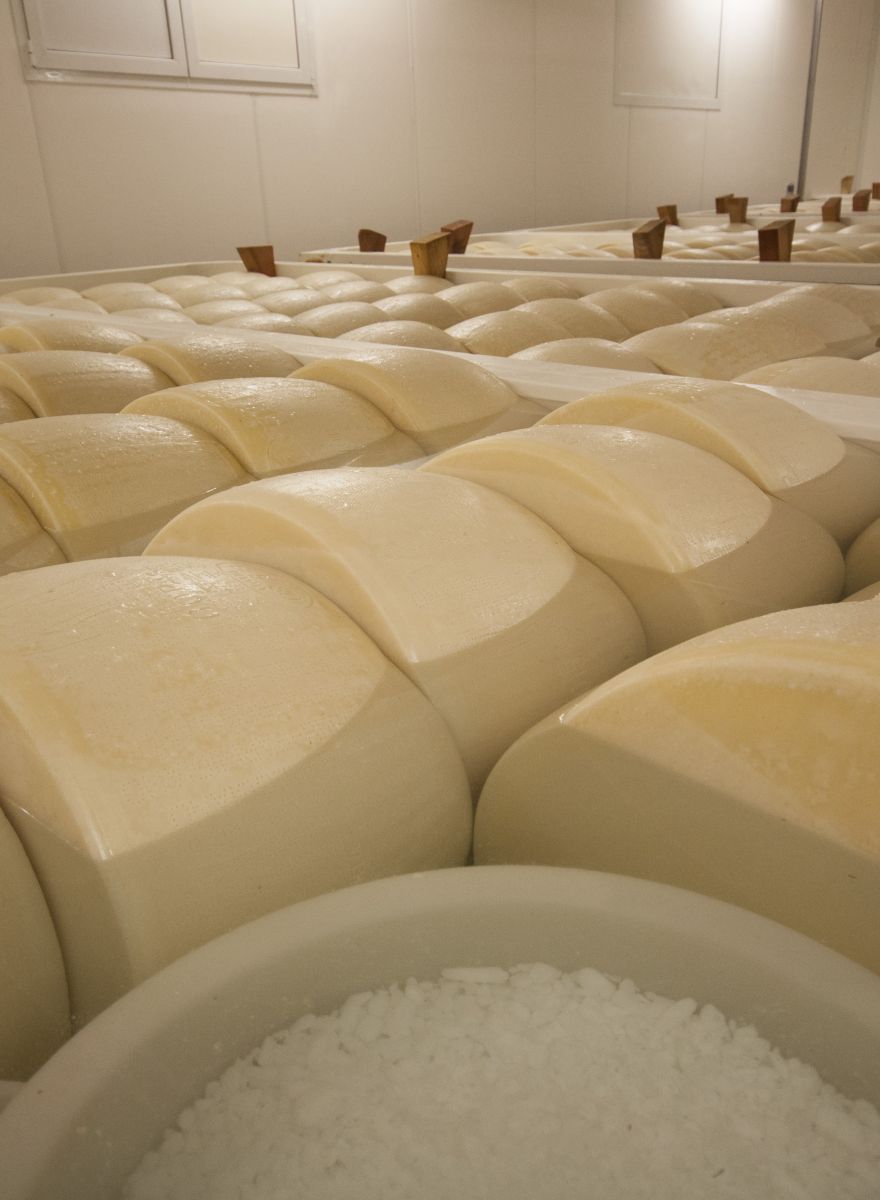
12- 18 months – Parmigiano Reggiano with 12-18 months of maturation has a harmonious and delicate flavour with scents of milk, yoghurt and fresh fruit. It is particularly suitable for aperitifs paired with sparkling white wines, or to enrich salads and cold dishes.
22-24 months – Parmigiano Reggiano with 22-24 months of maturation is soluble, crumbly and grainy with the right balance between mildness and tastiness, with notes of fresh fruit, nuts and meat stock. Perfect with medium body wines and to add flavour to all the dishes of the Italian tradition.
30-36 months – Parmigiano Reggiano with 30-36 months of maturation is particularly crumbly and grainy. The flavour is pronounced with notes of spices, nuts and meat stock. It is an ideal ingredient for filled and baked pastas or to be tasted at the end of meals, paired with fruit and honey.
more than 40 months – Parmigiano Reggiano with 40 months has passed the test of time and releases pleasant scents of spices. It is an exclusive gift and a pleasant companion to be tasted with structured and meditation wines.
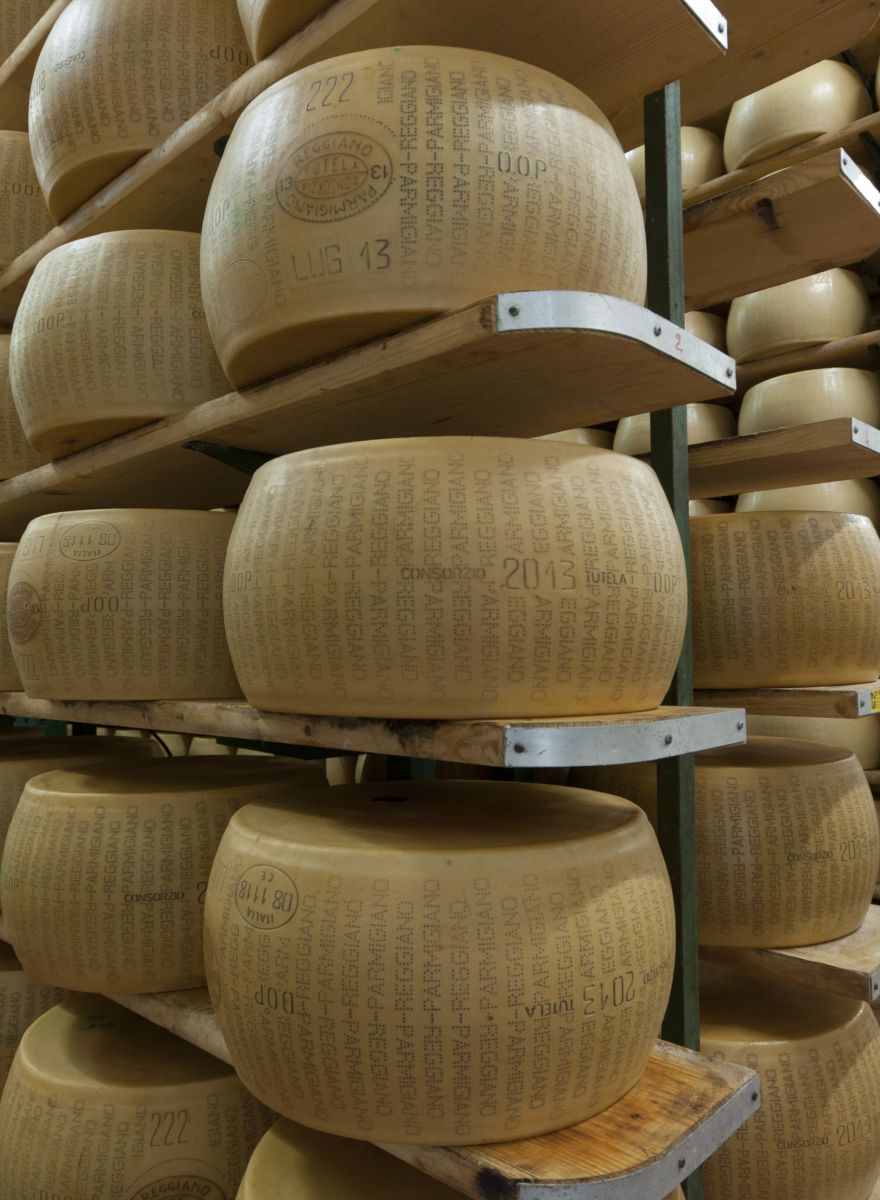
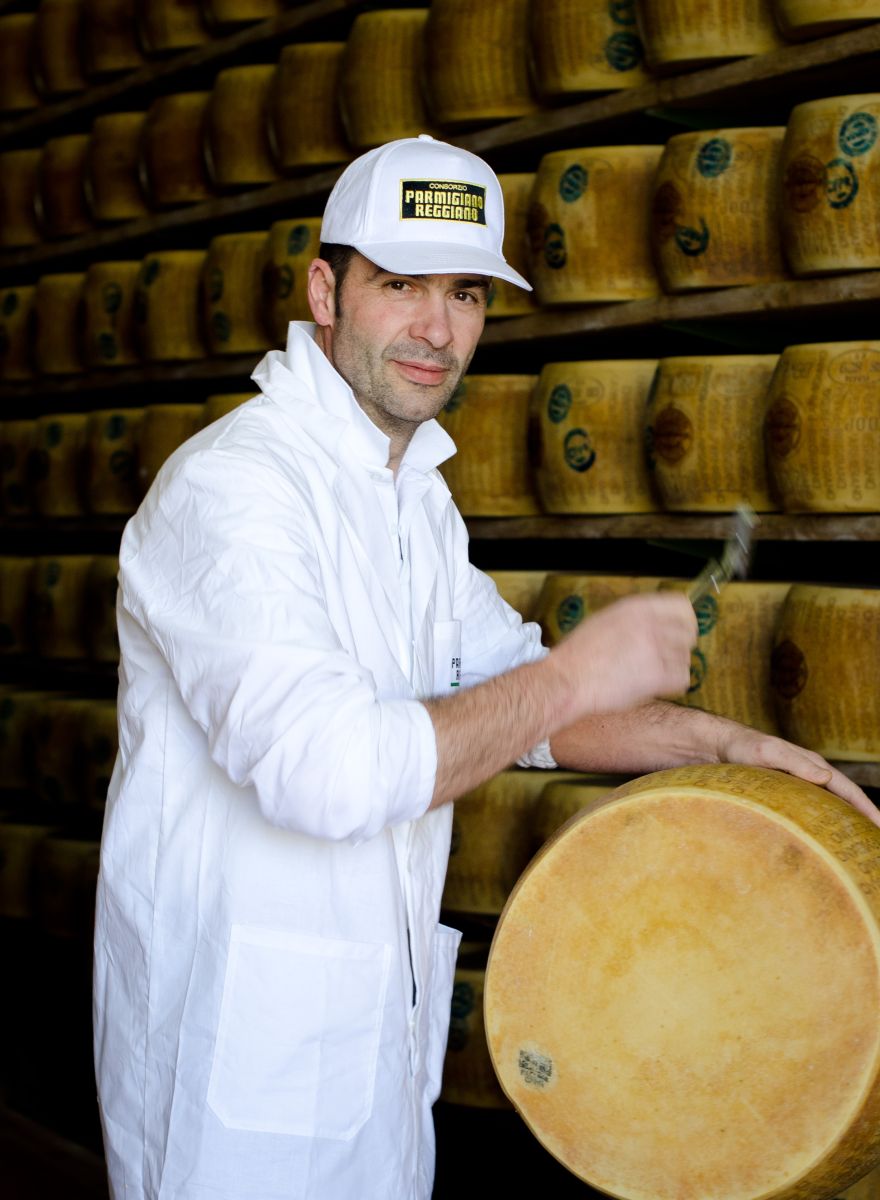
Control and marks.
The Parmigiano Reggiano Consortium is the protection body that includes all Parmigiano Reggiano producers, who process the milk from the farmers of the area of origin into this PDO cheese complying with the Specifications. It was set up in 1934 and has the purpose of protecting, defending and promoting the product, safeguarding its typicality and disseminating its knowledge worldwide. Every wheel of Parmigiano Reggiano is given a mark of origin (the well known “dots” and starting from 2002 also a “casein plate”). Furthermore, every wheel is quality tested at an age of about 12 months. Only if the wheel passes this test, it is branded with the selection mark (oval mark). The certification of conformity with the Specifications is given by the P-R Quality Control Body on behalf of the European Union and the Ministry.
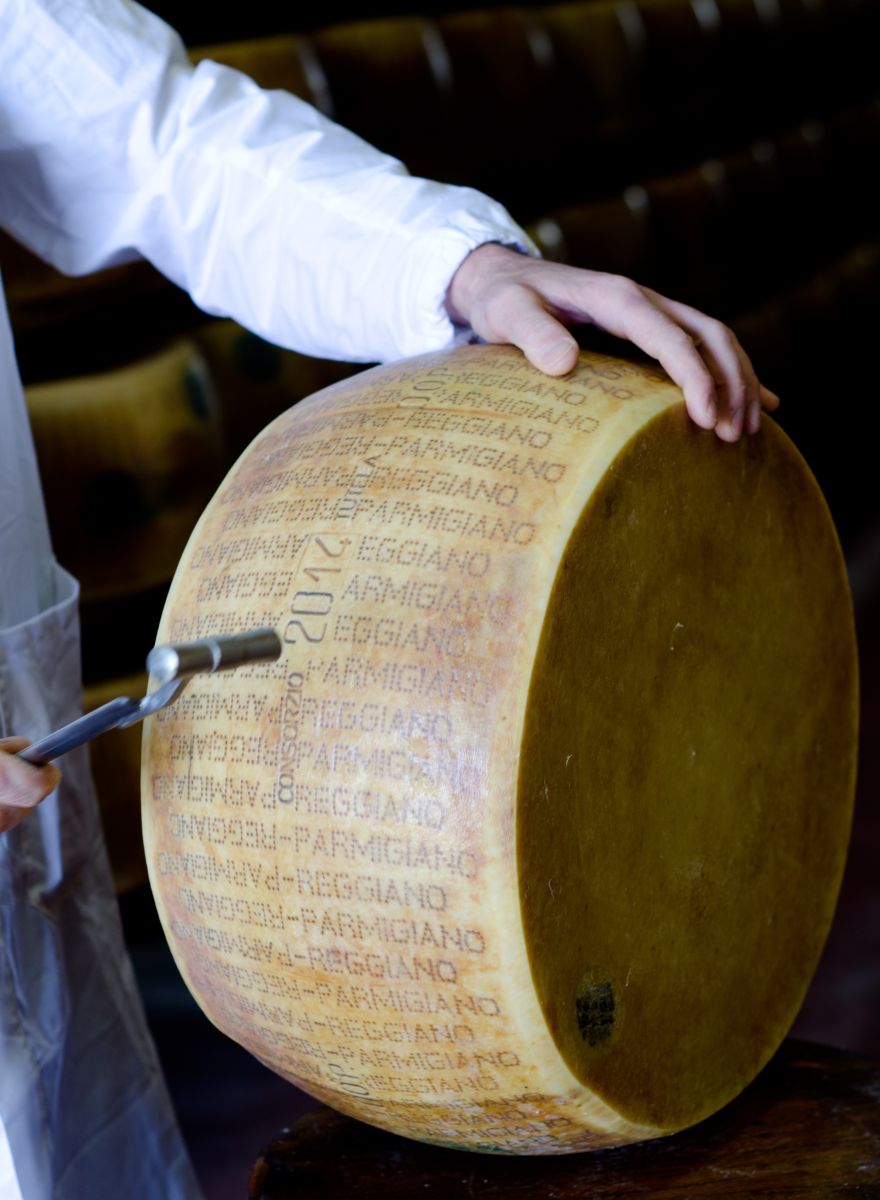
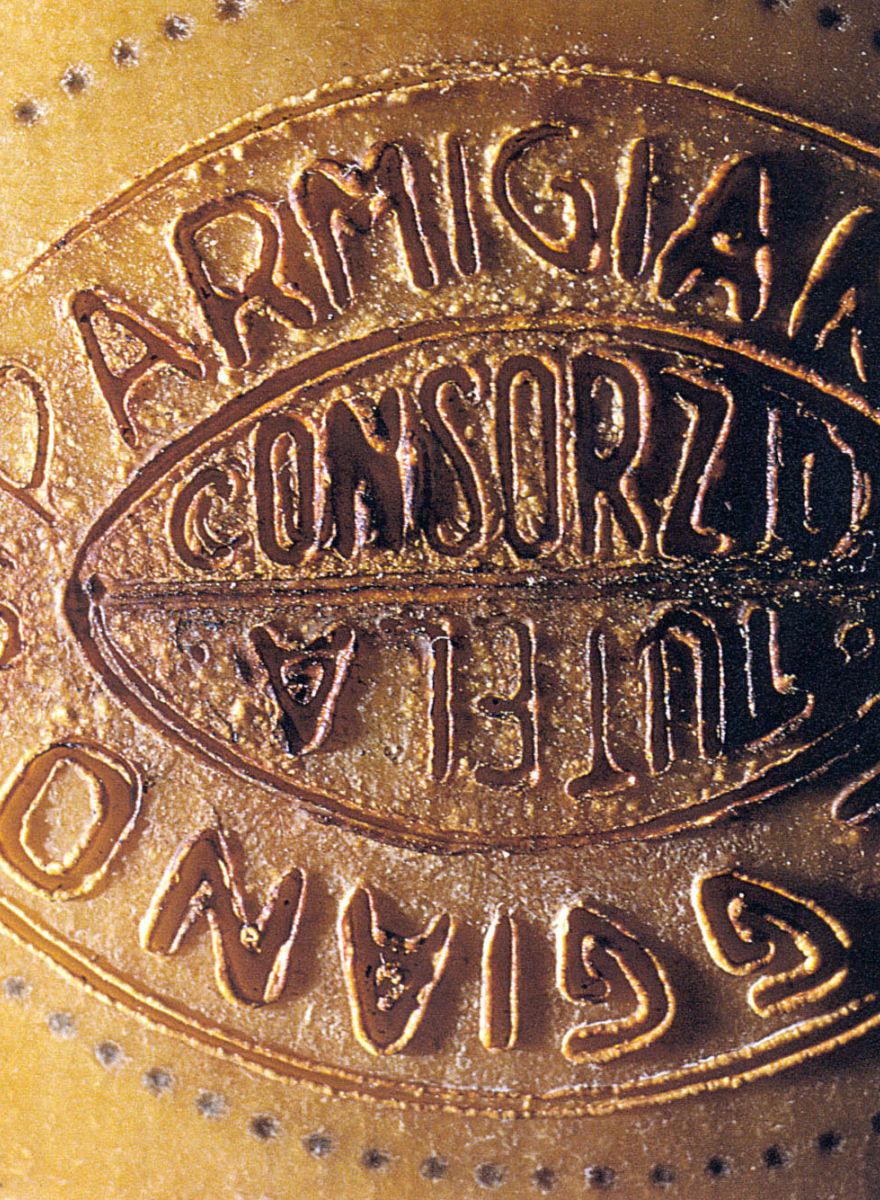
The figures of Parmigiano Reggiano (2020 data)
2,609 farms supplying milk to the dairies
267,000 cattle of more than 24 months of age for milk production
2.18 million tons of milk produced
20,6% of Italian milk production
321 producing dairies
3,940,000 wheels produced, corresponding to 160,000 tons
50 thousand people involved in the production supply chain
2.35-billion-euro turnover at consumption
59,524 tons exported
For further information on the Consortium, the product and the processing: www.parmigianoreggiano.it



